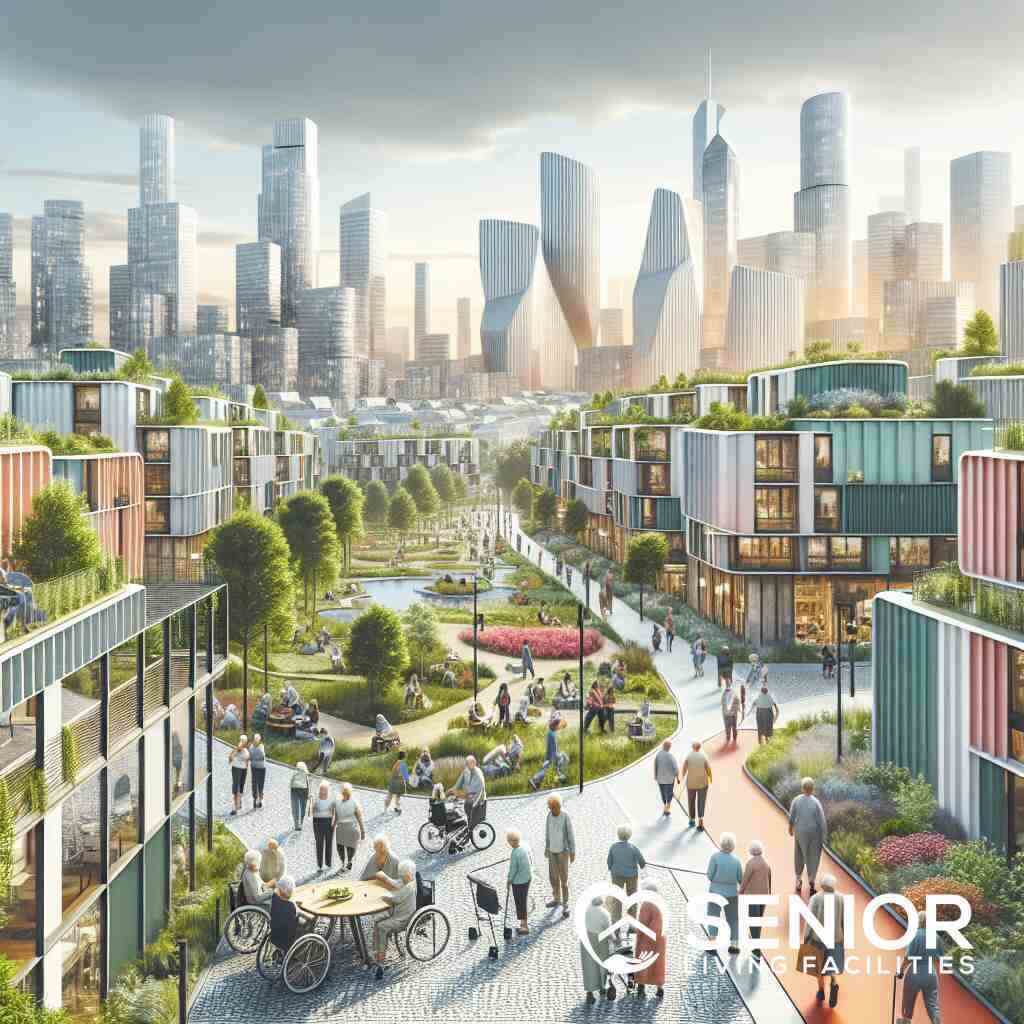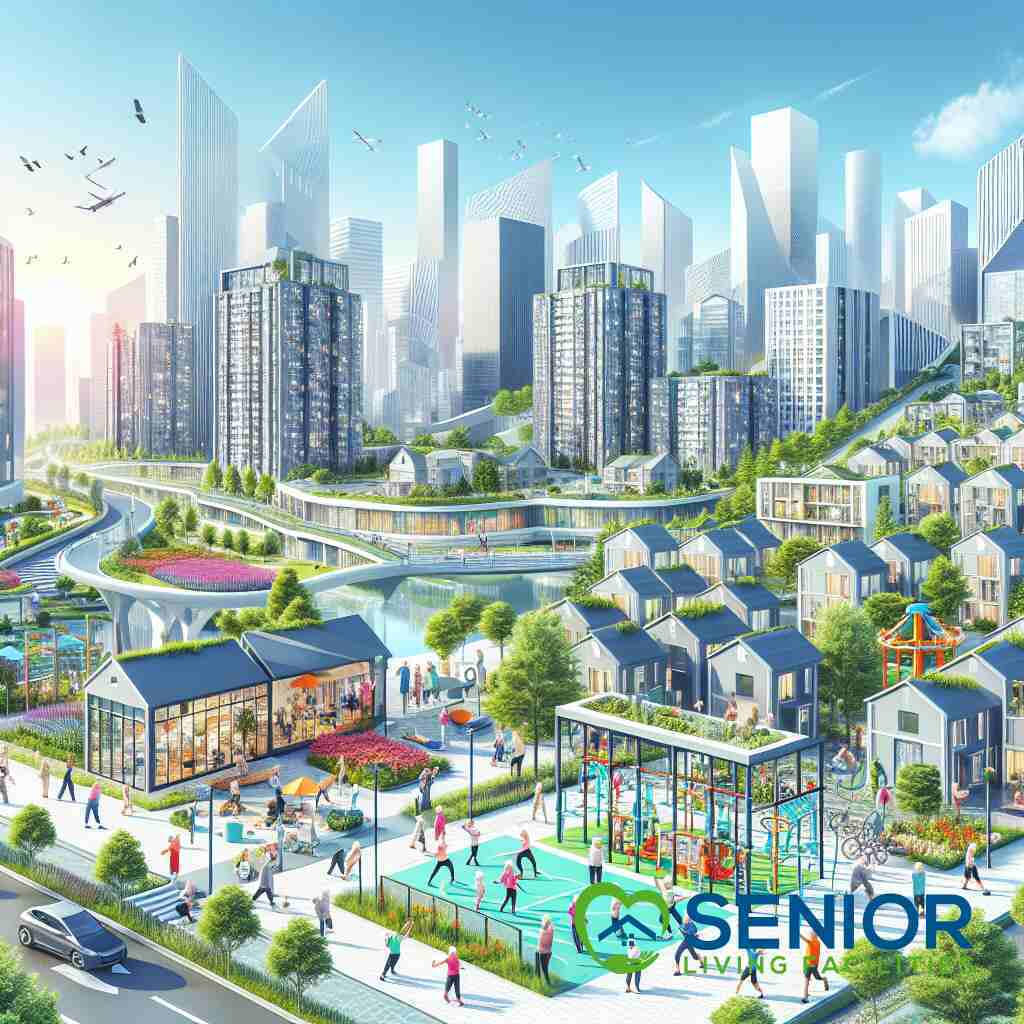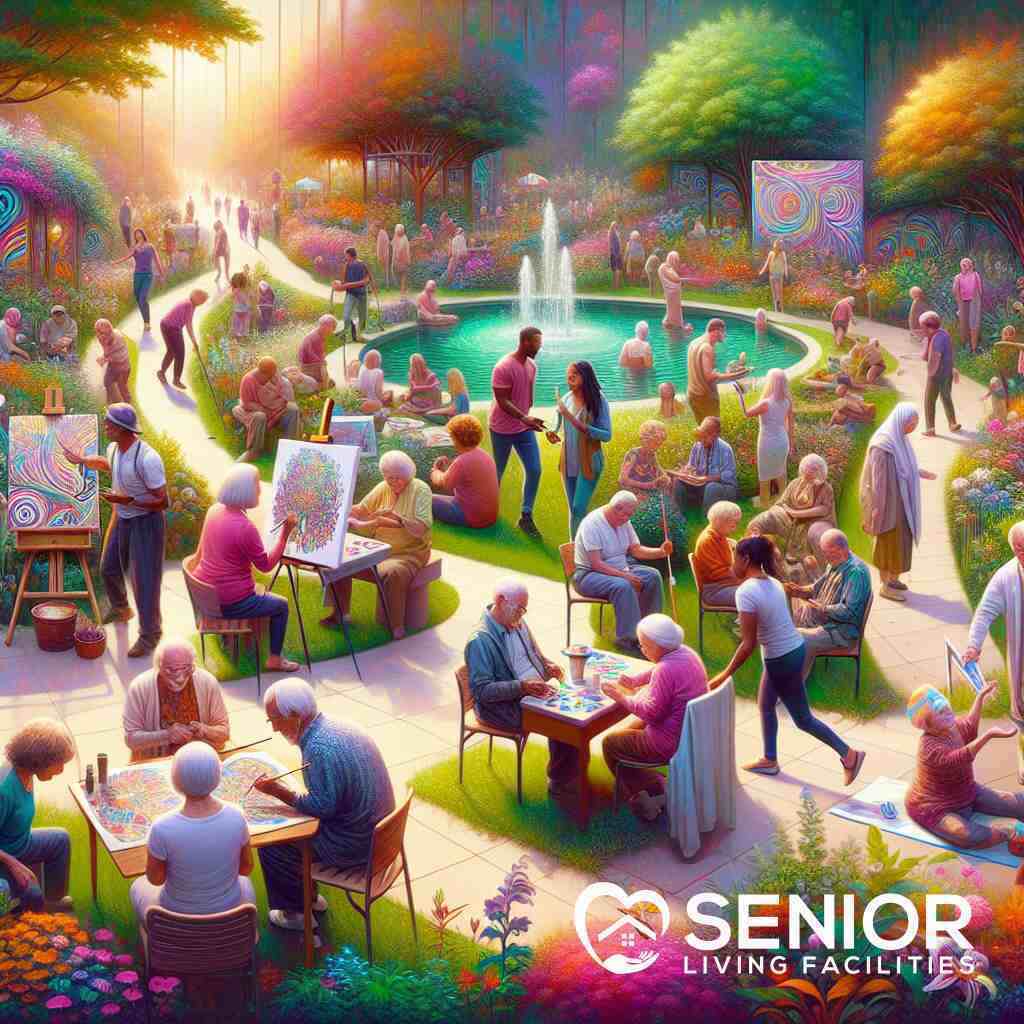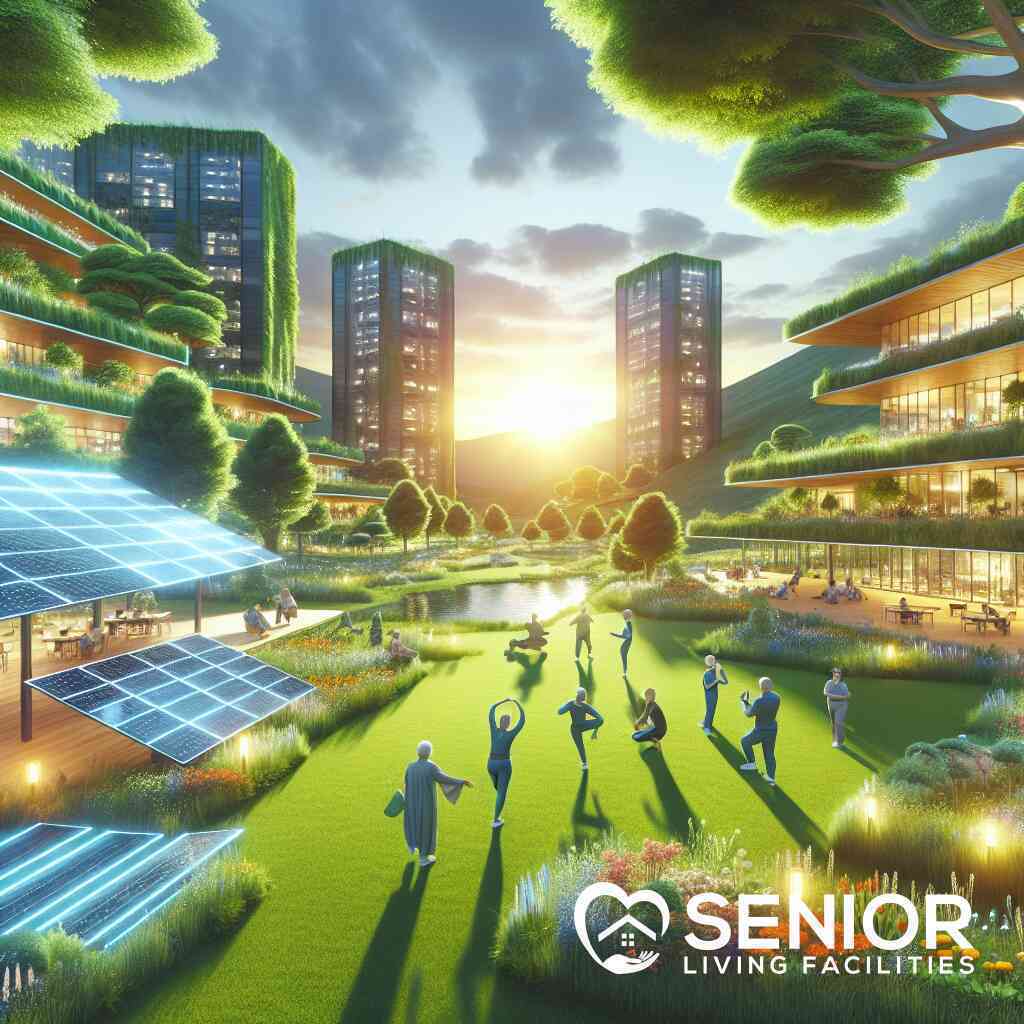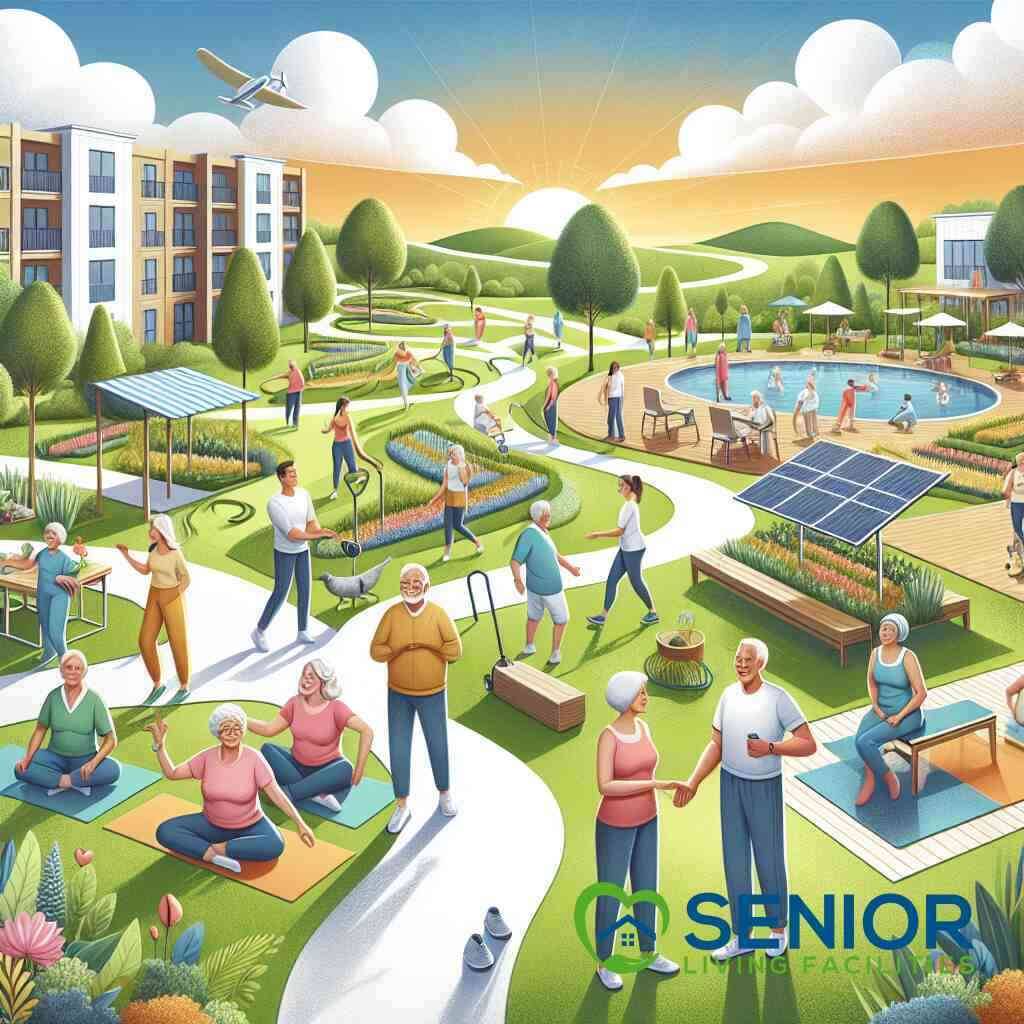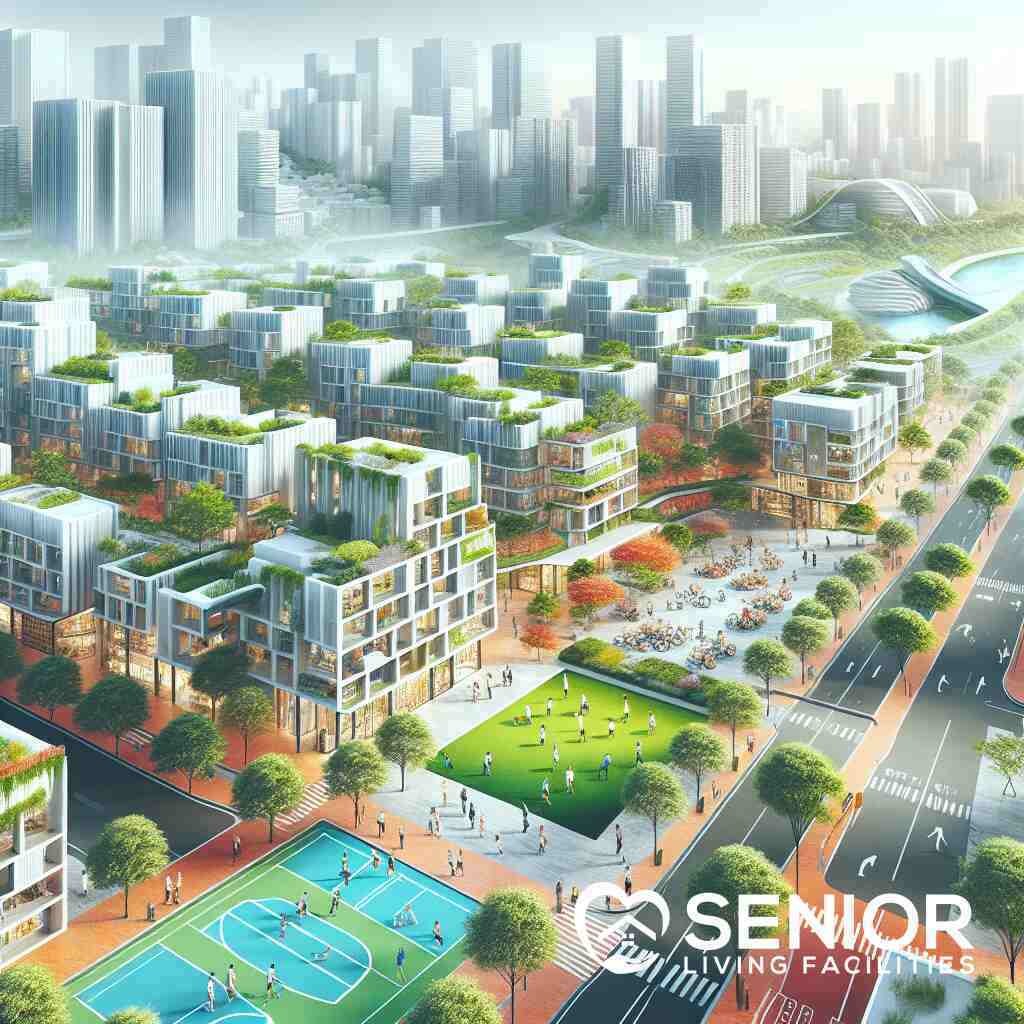
How do Senior Living Facilities Revolutionize Urban Care?
December 7, 2024
Unveiling the Urban Senior Living Revolution
The Shift Towards Urban Care for Seniors
Urban environments, long associated with the hustle and bustle of modern life, are rapidly transforming into haven-like communities that cater specifically to the needs of seniors. As cities evolve, there is an increasing drive to integrate urban senior care advancements that ensure safety, accessibility, and convenience for older adults. These transformations are crucial as they allow seniors the opportunity to indulge in a fulfilling lifestyle amidst the facilities of a metropolitan setting. As urban centers become more senior-friendly, there’s a predictable shift in the landscape of eldercare, emphasizing comprehensive care and active lifestyles for seniors.
Senior Living Facilities: A Catalyst for Change
Senior living facilities are at the forefront of this evolution, innovating care to match the high-paced pulse of urban life. By leveraging innovations in senior living, these facilities create environments that not only provide essential care but also encourage social interaction and continuous learning. The introduction of smart technologies and strategically designed wellness programs in these facilities offer residents a balanced, enriched life in the heart of the city. Senior living facilities are becoming an integral part of the urban ecosystem, fostering a community-oriented approach to senior care and creating a ripple effect across the industry.
Rethinking Eldercare in Metropolitan Areas
In metropolitan areas, reimagined eldercare translates to an integration of urban infrastructure with senior wellness initiatives. This strategy underlines the necessity of a harmonious relationship between city living and eldercare provisions. As a result, there is a pressing need to revolutionize care models, focusing on enhancing daily living through urban accommodation. The trend of rethinking eldercare in urban settings is paving the way for more nuanced and adaptive solutions that address the unique challenges faced by seniors in bustling city landscapes. By aligning eldercare practices with the demands and opportunities of urban settings, the quality of life for seniors in these areas is significantly optimized.
Smart Urban Living Ecosystems for Seniors
Leveraging Technology for Modern Senior Care
The integration of technology into senior living facilities has become a significant driver for urban senior lifestyle innovations. These innovations are designed to enhance the day-to-day lives of seniors, making urban environments more accessible and accommodating. Advanced technologies such as telemedicine, wearable health devices, and smart home systems ensure that seniors receive efficient and timely care. Additionally, the use of AI and machine learning in developing personalized care plans has markedly improved the quality of eldercare. These technological advancements represent a pivotal shift towards sustainable, future-proof senior living solutions within bustling cityscapes. The Rise of Technology in Senior Living Facilities for 2024
In modern urban settings, technology plays a crucial role in mitigating the challenges posed by dense populations and fast-paced lifestyles. For instance, intelligent transportation systems and real-time public transit updates significantly improve mobility for seniors. Furthermore, digital platforms facilitate social connectivity by allowing seniors to communicate with family, friends, and care providers easily. Top 5 Mind-Boggling Aspects of Senior Living Amenities Today As cities continue to advance technologically, they become more adept at fulfilling the unique needs of their senior residents. By aligning urban infrastructure with eldercare technology, cities cultivate an environment that fosters independence and well-being among seniors. The Evolution of HealthCare in Senior Living
Integrating Urban Infrastructure and Senior Wellness
The harmony between urban infrastructure and senior wellness is crucial for crafting a supportive environment for older adults. By blending city features with wellness initiatives, seniors benefit from enhanced living conditions. Urban planners and senior living communities are now prioritizing the integration of comprehensive wellness programs within urban frameworks. This involves designing spaces that encourage physical activity, mental wellness, and social engagement for seniors, thus improving their overall quality of life.
Senior living facilities are collaborating with city planners to reimagine urban infrastructure and senior wellness. Establishing accessible parks, pedestrian-friendly walkways, and recreational facilities near senior housing fosters healthier lifestyles. These efforts not only cater to the physical needs of seniors but also promote a sense of community and belonging. By bridging the gap between city infrastructure and senior care, urban areas can truly optimize their support for the aging population.
The Role of Assisted Living Locators in Urban Environments
Assisted living locators serve as essential guides in navigating the expansive options available in urban senior living. These locators provide invaluable assistance in identifying the most suitable senior living opportunities tailored to individual needs. Particularly in sprawling urban landscapes, the role of assisted living locators is increasingly critical in ensuring that seniors and their families can find the right facilities efficiently.
The demand for suitable senior housing is on the rise in cities. Assisted living locators offer personalized services that guide seniors through the complexities of available options, including factors like location, level of care, and amenities. By assisting families in their search, these professionals reduce the stress and confusion often associated with senior housing decisions. Moreover, assisted living locators contribute to the broader ecosystem of assisted living in urban areas, ensuring that seniors have access to resources that improve their lives.
Senior Urban Community Advancements and Innovations
The landscape of senior urban communities is undergoing a profound evolution, marked by numerous advancements and innovations. These communities are embracing new models that prioritize inclusivity, interactivity, and adaptability, enhancing the urban living experience for seniors. Such integrated urban communities for seniors focus on cultivating environments where older adults can thrive socially, intellectually, and physically.
Innovative senior urban communities are designed with future-forward concepts that account for demographic shifts and the diversity of senior needs. By hosting an array of programs, including health and wellness classes, cultural outings, and community events, these communities foster engagement and lifelong learning. As these models gain popularity, they set new standards for care and lifestyle in urban senior living, paving the way for healthier, more fulfilled aging experiences in city environments.
Designing Urban-Friendly Senior Housing
Architectural Innovations in Senior Living Facilities
In the realm of senior living, architectural innovations are shaping environments that cater to the needs and preferences of older adults while integrating seamlessly with urban landscapes. These innovations include the development of mixed-use buildings where senior apartments are strategically colocated with retail spaces, healthcare facilities, and recreational areas, fostering convenience and accessibility. Additionally, architects are embracing eco-friendly designs and energy-efficient solutions, resulting in architectural innovations for cities that not only support sustainable living but also enhance the quality of life for residents.
By adopting universal design principles, senior living facilities ensure accessibility for all residents, incorporating features such as wider doorways, ramps, and easy-to-navigate layouts. Furthermore, biophilic design elements, which integrate natural lighting and greenery, have been found to promote physical and mental well-being among seniors, enhancing the therapeutic environment within these spaces. Such architectural advancements not only improve the day-to-day lives of seniors but also align senior living facilities with the forward-thinking philosophy of urban development.
Urban-Friendly Housing Options for Seniors
The demand for urban-friendly senior accommodations has led to a diversification of housing options tailored to the unique needs and lifestyles of older adults living in city settings. These options range from independent living communities to more assisted setups, offering varying levels of support depending on individual requirements. Modern senior apartment complexes in urban areas often feature a variety of amenities, including fitness centers, social clubs, and on-site dining options, providing residents with everything they need within a close-knit community.
The shift towards mixed-use developments has allowed seniors to remain active and socially engaged while enjoying the benefits of urban living. Proximity to cultural venues, public transportation, and healthcare services further enriches the living experience for seniors. What to Look for in Senior Living Facilities in NY? By providing diverse housing options, cities are not only accommodating the aging population but also enriching the urban fabric with vibrant, intergenerational communities that reflect the dynamism of city life.
Enhanced Senior Care in Urban Homes
The concept of enhanced senior care takes center stage as urban homes evolve to meet the complex needs of their aging residents. Modern urban senior housing now incorporates advanced technological solutions and smart home systems, enabling seniors to maintain independence while ensuring their safety and well-being. From automated lighting and climate control to voice-activated emergency systems, these enhancements cater to the growing demand for enhanced care environments in cities, where seniors’ needs are seamlessly met within the comfort of their homes.
Moreover, cities are seeing an increase in multi-generational housing projects and co-housing initiatives, promoting social connections and mutual support among residents of different ages. Such projects emphasize community integration and resource sharing, creating environments where seniors can thrive alongside younger generations. Best Assisted Living Facilities for Affordable Senior Care As urban areas continue to innovate, they redefine what it means to grow older in the city, presenting elders with opportunities to lead enriched, purposeful lives while staying connected to their families and communities.
Socially Integrated Senior Care Solutions
Building Community Connections for Seniors in Cities
Cultivating community connections is vital for enhancing the lives of seniors in urban settings. These bonds can be facilitated through strategically designed senior living facilities that prioritize inclusivity and interaction. By encouraging elders to engage in social activities and community events, cities can effectively improve life for seniors in cities. This approach not only promotes mental health but also reduces feelings of isolation among older adults, providing them with a sense of belonging and purpose.
Urban environments offer numerous opportunities for community engagement through cultural organizations, clubs, and volunteer groups geared toward seniors. These initiatives play a crucial role in weaving seniors into the urban tapestry, ensuring they remain active participants in city life. Furthermore, senior living facilities can enhance these community connections by hosting regular social gatherings, wellness workshops, and cultural outings tailored to the interests of their residents. By integrating seniors into the fabric of city life, urban areas can foster a more vibrant, supportive environment for their aging populations.
Collaborative efforts between local governments, non-profit organizations, and senior living communities are essential to establishing sustainable, socially integrated urban settings. Why Choose Senior Living Facilities in Unique Locations? These partnerships can lead to innovative programs and services that address seniors’ unique needs, from transportation solutions to intergenerational mentorship schemes. By fostering a cooperative spirit, cities can transform into nurturing environments that thoroughly support their eolderresidents.
Urban Senior Living and Social Integration
The essence of urban senior living lies in achieving seamless social integration. Senior living facilities are pivotal in optimizing urban care for seniors by facilitating meaningful connections both within their walls and the broader city communities. Emphasizing community and social integration for seniors, these facilities focus on creating shared spaces and engaging activities designed to connect residents and with local communities.
Social integration initiatives in urban senior living settings include crafting vibrant communal spaces that encourage interaction and leveraging city-based resources to stimulate engagement. Senior apartments within these facilities often include shared dining areas, libraries, and recreational rooms tailored to foster socialization. Moreover, residents are encouraged to participate in communal projects that benefit both their living environment and the surrounding urban landscape, nurturing a sense of purpose and collective achievement.
Urban environments are rich in cultural and recreational opportunities that can be woven into the fabric of senior living. By fostering partnerships with local art institutions, fitness centers, and educational platforms, senior living facilities enhance the learning and recreational opportunities available to their residents. The Best Fitness Programs in Senior Living Communities These collaborations provide seniors with life-enhancing experiences, contributing to a well-rounded, fulfilling urban lifestyle.
Promoting Intergenerational Living in Urban Areas
Intergenerational living in urban areas is a forward-thinking solution that enhances the quality of life for seniors by promoting meaningful interactions between different age groups. These connections are facilitated by urban living solutions, which incorporate shared residential spaces and community initiatives. Such initiatives enrich the lives of both the elderly and younger residents, fostering mutual learning and understanding.
Communities that embrace intergenerational living often create opportunities for seniors to share their wisdom and experiences with younger generations. This exchange not only benefits the seniors, who gain a renewed sense of purposebut also enriches younger residents’ lives through exposure to diverse perspectives. In urban areas, activities like mentorship programs, storytelling events, and community gardening offer practical platforms for intergenerational exchange.
Senior living facilities can play a proactive role in promoting intergenerational living, leveraging spaces and events that encourage interaction across age groups. These communities can host multigenerational workshops, invite local schools to collaborate on projects, or partner with family-oriented events, thereby integrating seniors more thoroughly into the broader community. By embracing intergenerational living, urban areas enhance community vibrancy and support more dynamic, resilient environments for all residents.
The Future of Senior Living in Urban Settings
Forecasting Trends in Urban Senior Housing
The future of urban senior housing is poised for remarkable transformations driven by evolving demands and groundbreaking innovations. One of the most compelling trends is the move towards creating more integrated communities where urban senior housing evolution transcends traditional models. As urban populations age, cities are tasked with developing environments that not only support elderly residents’ physical needs but also stimulate social and intellectual engagement. This shift marks a pronounced departure from the past, reflecting a deeper understanding of how urban settings must adapt to better cater to the senior populace.
Urban planners and architects are now prioritizing designs that foster mobility and independence, leveraging concepts such as mixed-use development and biophilic design. These strategies are being welcomed in urban areas to ensure that housing is not only accessible but also enriching to the daily lives of seniors. Moreover, the integration of smart technology is facilitating safer, more efficient living spaces, ere automated systems cater to diverse needs f,,rom climate control to personalized healthcare. By proactively adapting to these trends, cities can create inclusive environments that enhance litheuality for seniors.
Innovative Urban Senior Care Solutions on the Horizon
With technological advancements leading the charge, urban environments are on the brink of a senior care revolution. Emerging technologies such as AI-driven health monitoring systems and predictive analytics will redefine eldercare, promoting personalized and preventative care. The use of virtual reality and augmented reality in cognitive therapies offers new dimensions to senior wellness programs, making technology an integral part of everyday life in senior living communities.
These innovations are part of broader efforts to establish smart cities for seniors that prioritize the needs of older adults. As infrastructures become more intuitive, they can provide seamless support across various aspects of senior living, including transportation and healthcare. Such urban solutions aim to foster independence and dignity for seniors, proving that aging in place within city confines can be both feasible and desirable. By harnessing these innovations, urban areas are better equipped to meet the challenges of serving their growing senior populations.
Preparing for the New Era of Urban Senior Living
As cities prepare for the demands of an aging population, there is a significant push towtowarddefining urban eldercare. This preparation includes fostering interdisciplinary collaborations that span across public and private sectors, ensuring comprehensive support for seniors. By engaging stakeholders from healthcare, technology, urban planning, and community organizations, the groundwork is laid for transformative changes in urban senior living.
A keen focus is placed on developing flexible urban living environments that can adapt to both individual and broader community needs. Cities are integrating urban living solutions for the eldeelderlyomoting designs and policies that embrace sustainability and resilience. Additionally, educational outreach and community programming are integral to this future vision, ensuring that seniors remain informed and active participants in shaping their living environments. As urban centers evolve to embody these principles, they set the stage for a new era where senior living is harmoniously intertwined with urban vitality.
Conclusion: A New Dawn for Urban Senior Living
Reflections on Urban Care Transformation
As we stand on the brink of a new era in senior care, urban landscapes are embracing substantial shifts in how they provide for their older populations. The transformation of urban senior living facilities heralds an innovative approach that interlaces the vibrancy of city life with the comfort and security essential for aging populations. This fusion creates an enriching environment where seniors thrive, surrounded by the dynamic energy of urban communities while receiving the tailored care they require. The infusion of technology, advanced wellness programs, and comprehensive community integration has fostered a reimagined approach for reimagined approach for senior urban living. Such changes reflect not just an adaptation to demographic trends but a commitment to enhancing the quality of life for seniors across metropolitan landscapes.
In these urban settings, senior living communities now prioritize accessibility, connectivity, and inclusivity. Senior Living Facilities: What Defines Quality Communities? They serve as catalysts for a broader societal shift towards valuing elderly populations as integral to the urban fabric. This reflects a paradigm shift in how elders engage with and contribute to city life, bolstering the community spirit and emphasizing intergenerational connections. As these urban environments continue to evolve, they set the stage for rethinking urban eldercare for the future. Such innovative strides ensure that urban senior living offers not just a place of residence but a holistic lifestyle centered on health, fulfillment, and engagement.
The Ongoing Journey Towards Optimized Senior Wellness
The journey towards optimized senior wellness in urban settings is an ongoing endeavor that continuously adapts to new knowledge, technology, and societal changes. As cities become more advanced, they offer increasing opportunities to enhance the well-being of their senior citizens. This proactive approach involves a constant reevaluation of senior care models and a commitment to adopting future urban senior living trends that address seniors’ evolving needs. Urban planners, healthcare professionals, and community leaders collaborate to forge strategies that encompass the entirety of senior wellness-from physical health and mental acuity to social engagement and emotional fulfillment.
One significant advancement is the integration of smart technology, offering seniors a more connected and autonomous lifestyle. As these innovations gain traction, they redefine what it means to age gracefully in an urban setting. Furthermore, there is a growing emphasis on personalized care plans that utilize data analytics and artificial intelligence to anticipate and meet individual health needs effectively. The commitment to refining these approaches ensures that urban environments remain at the forefront of providing exemplary care.
In this new dawn for urban senior living, the commitment to continuous improvement and innovation underscores the collective drive towards a future where seniors live with dignity, independence, and access to full-spectrum wellness services. Senior Living Facilities remains dedicated to guiding individuals and families through this dynamic landscape, helping them navigate understanding senior housing near meand assessing the wealth of opportunities available in cities across the nation.
Frequently Asked Questions
Question: How do senior living facilities contribute to the urban senior living revolution?
Answer: Senior living facilities play a crucial role in the urban senior living revolution by transforming urban environments into supportive hubs for seniors. Ultimate Review: Senior Living Facilities Across America The Difference Between Urban and Rural Senior Living Facilities These facilities harness the latest innovations in senior care, including smart technologies and wellness programs, to create enriched living experiences that promote independence, health, and social engagement. By aligning with city infrastructures, they not only ensure convenient access to essential services but also foster vibrant communities that enhance the quality of life for urban seniors. Senior Living Facilities Near You
Question: What are the key innovations in urban senior care that are enhancing senior wellness in city settings?
Answer: Key innovations in urban senior care that boost wellness include the integration of technology such as telemedicine, wearable health devices, and AI-driven personalized care plans. Ultimate Guide to Tech-Savvy Senior Living in 2024 These advancements enable timely and efficient health monitoring and foster active lifestyles. Moreover, architectural innovations in senior living facilities focus on creating accessible, eco-friendly spaces equipped with smart home systems, contributing to wellness and safety. This holistic approach ensures that urban seniors benefit from comprehensive proactive care solutions for anproved life quality.
Question: How are senior living facilities rethinking eldercare in cities to meet the needs of modern seniors?
Answer: Senior living facilities are rethinking eldercare in cities by developing integrated living environments that blend traditional care with modern urban lifestyles. By establishing mixed-use developments that colocate senior apartments with essential city resources, they offer seniors the convenience of proximity to healthcare, cultural, and recreational facilities. These facilities also prioritize social integration, promoting intergenerational living and community engagement, which helps alleviate isolation and fosters vibrant social connections. Such efforts ensure that seniors enjoy a fulfilling and dynamic urban lifestyle.
Question: How does technology in modern senior living facilities enhance urban senior life?
Answer: Technology significantly enhances urban senior life by providing advanced solutions that cater to the specific needs of older adults. In modern senior living facilities, technology such as smart home systems, AI, and machine learning facilitates personalized care and improves daily life convenience. Features like automated lighting, voice-activated emergency systems, and digital connectivity enable seniors to live safely and independently in urban environments. By integrating these technologies, senior facilities ensure that seniors receive seamless support while promoting active engagement with city life.
Question: In what ways do Senior Living Facilities help families in finding suitable urban senior living accommodations?
Answer: Senior Living Facilities simplify the search for urban senior living accommodations by providing an expansive database that covers senior communities nationwide. Our platform offers tools to search, compare, and connect with facilities that suit individual needs. How to Compare Senior Living Facilities for a Better Choice? By entering your location, you can assess various housing options, such as independent and assisted living, comparing levels of care and amenities. We also offer personalized guidance to navigate these choices, ensuring that seniors and their families find communities that align with their lifestyle and care requirements effectively. How to Select Ideal Senior Living Facilities Near You
